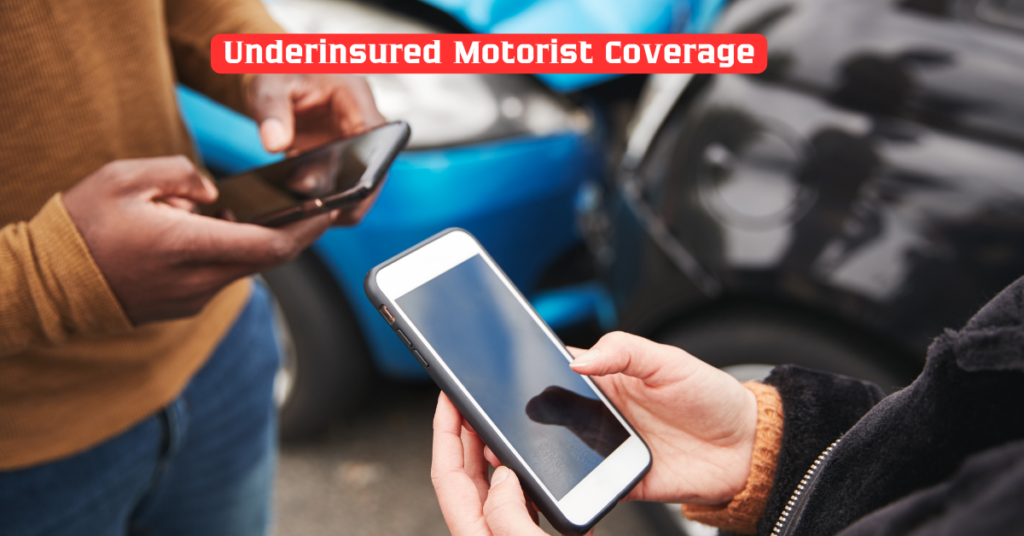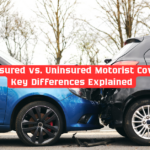When you’re involved in a car accident, having the right insurance coverage can make a significant difference in protecting yourself, your vehicle, and your finances. One type of coverage that plays a crucial role in this protection is underinsured motorist (UIM) coverage. This article will explore underinsured motorist coverage, how it works, its importance, and what you need to know to ensure you’re adequately covered in case of an accident.
What is Underinsured Motorist Coverage?
Underinsured motorist coverage is an optional car insurance policy that protects you if you’re involved in an accident with a driver who doesn’t have enough insurance to cover the damages they caused. It comes into play when the at-fault driver’s insurance policy limits are lower than the actual costs of the accident, including medical bills, vehicle repairs, and other expenses.
While most states require drivers to have liability insurance, not all states require underinsured motorist coverage. Even in states where it’s optional, it’s highly recommended, especially considering the rising number of drivers who are either underinsured or uninsured.
Why Do You Need Underinsured Motorist Coverage?
Accidents can be costly, both in terms of physical damage and medical expenses. If you’re involved in an accident with a driver who lacks adequate insurance coverage, you could be left paying for your own medical bills and repairs, as well as the pain and suffering that may result from the incident. This is where underinsured motorist coverage steps in. It provides financial protection when the other driver doesn’t have enough insurance to cover the total costs of the accident.
In addition to covering medical bills and vehicle repair costs, UIM coverage can also help you with lost wages and other accident-related expenses that your primary insurance might not fully cover.
How Does Underinsured Motorist Coverage Work?
Underinsured motorist coverage generally works in one of two ways, depending on the state and your policy. The coverage can either be:
- Supplementary: UIM coverage is used to supplement the at-fault driver’s liability insurance. If the at-fault driver’s insurance doesn’t cover the full extent of your expenses, your UIM coverage will make up the difference, up to the limits of your policy.
- Stand-Alone: In some cases, UIM coverage acts as a stand-alone policy. If the at-fault driver has no insurance or is underinsured, your own UIM policy will cover the costs up to the policy limits.
It’s important to understand the specific terms of your UIM policy, including its limits and the types of damages it covers. Some policies may cover only medical expenses, while others may include coverage for lost wages, property damage, and more.
What Are the Benefits of Underinsured Motorist Coverage?
- Protection Against Financial Burden: UIM coverage helps you avoid the financial strain of paying out-of-pocket for medical bills, vehicle repairs, and lost wages if the at-fault driver has insufficient insurance.
- Peace of Mind: Knowing that you’re covered even in the event of an accident with an underinsured driver gives you peace of mind and reduces the stress associated with accident recovery.
- Access to Comprehensive Coverage: Many states offer different types of UIM coverage, including bodily injury and property damage, giving you more extensive protection for a variety of scenarios.
- Affordable Premiums: Compared to other types of insurance, UIM coverage is relatively affordable and provides significant protection for the cost.
- Coverage for Hit-and-Run Accidents: In some cases, UIM coverage can also apply if you’re the victim of a hit-and-run accident, assuming the at-fault driver cannot be identified.
Does Your State Require Underinsured Motorist Coverage?
While underinsured motorist coverage can be a lifesaver, not every state requires it. Each state has different laws regarding car insurance, and while many states require a minimum level of liability insurance, UIM coverage is often optional.
Here’s a breakdown of the requirements in various states:
| State | UIM Coverage Requirement |
|---|---|
| California | Optional |
| New York | Required |
| Florida | Optional |
| Texas | Optional |
| Michigan | Required |
| Ohio | Required |
| Georgia | Optional |
As you can see, some states like New York and Michigan have mandatory UIM coverage, while others, such as Florida and California, leave it to the driver’s discretion. It’s essential to check with your state’s Department of Motor Vehicles (DMV) or your insurance provider to understand the specific requirements in your state.
How to Choose the Right Underinsured Motorist Coverage
When deciding on the amount of UIM coverage to purchase, consider the following factors:
- Medical Needs: Assess your potential medical costs and select a coverage level that will adequately cover you in the event of a severe accident.
- Vehicle Value: If your car is valuable or relatively new, you may want to opt for higher UIM coverage limits to ensure that repairs or replacement costs are covered.
- Personal Financial Situation: Consider your financial ability to pay out-of-pocket for damages and injuries not covered by the at-fault driver’s insurance. Higher coverage provides more protection but may come at a higher premium.
- State Requirements: If you live in a state where UIM coverage is mandatory, make sure you meet the required minimums. Even if it’s not required, it’s a wise decision to purchase it for additional protection.
Underinsured Motorist Coverage vs. Uninsured Motorist Coverage
It’s important to distinguish between underinsured motorist coverage and uninsured motorist (UM) coverage. While both protect you in case the at-fault driver cannot cover your damages, the key difference lies in the insurance status of the other driver:
- Uninsured Motorist Coverage (UM): This applies if the at-fault driver has no insurance at all.
- Underinsured Motorist Coverage (UIM): This applies if the at-fault driver has insurance, but their policy limits are not sufficient to cover the full extent of the damage.
Both types of coverage provide valuable protection, but if you’re trying to choose between the two, underinsured motorist coverage can offer more extensive protection in situations where the other driver has some insurance but not enough.
Conclusion
Underinsured motorist coverage is a critical part of your car insurance policy, offering financial protection when you’re involved in an accident with a driver who lacks sufficient insurance. While not all states require it, having UIM coverage can provide peace of mind and prevent significant financial hardship in case of an accident. Be sure to review your state’s requirements and discuss your coverage options with your insurance provider to ensure you have the protection you need.
For more details on how underinsured motorist coverage can protect you in an accident, visit this article and explore more underinsured motorist coverage resources here.


